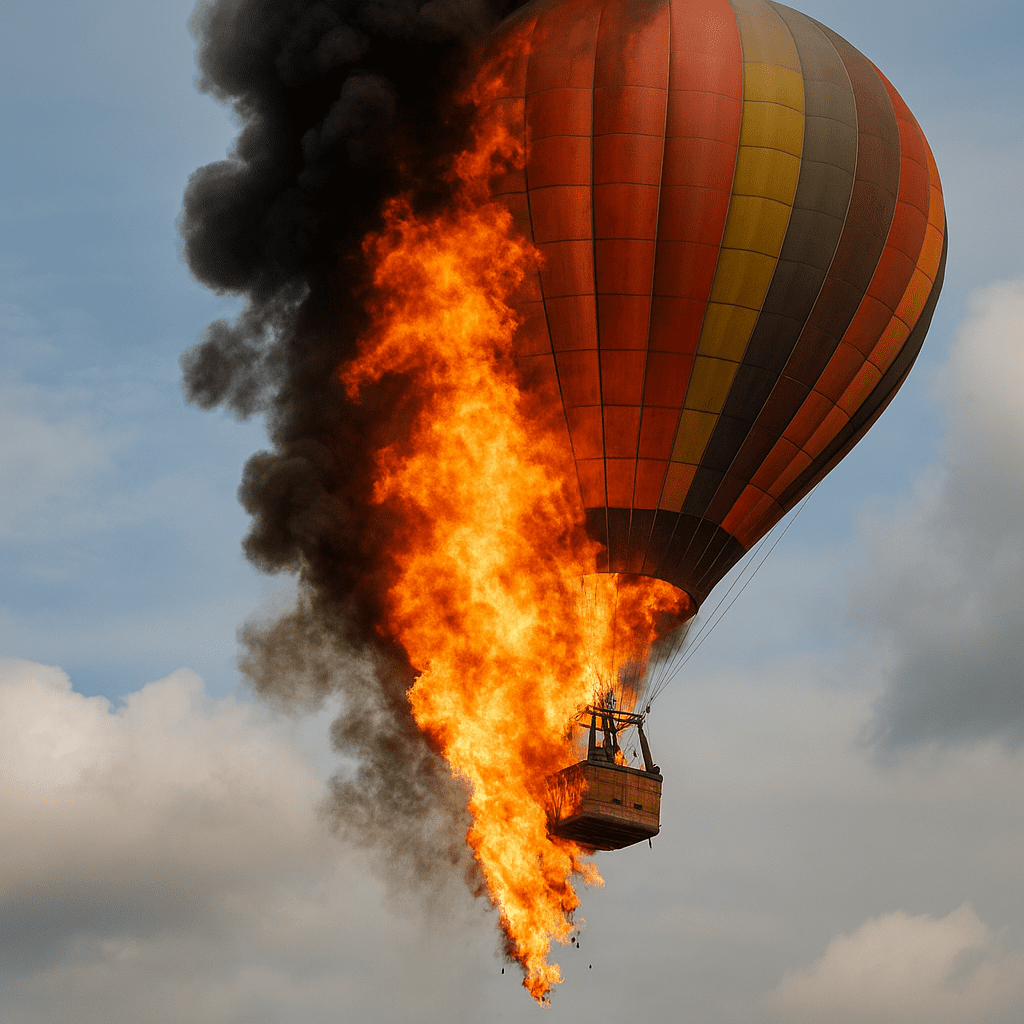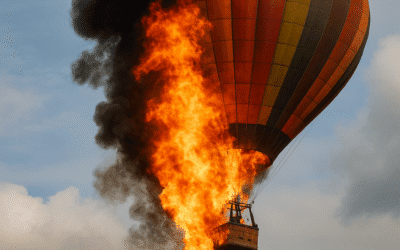Hot Air Balloon Fire in Brazil Kills 8: What Really Happened and How We Can Prevent Future Tragedies

Hot Air Balloon Fire in Brazil Kills 8: What Really Happened and How We Can Prevent Future Tragedies
A Joyride That Turned Into a Nightmare
On the morning of June 21, 2025, what began as a breathtaking sunrise balloon tour turned into a national tragedy in Brazil. A hot air balloon carrying 21 people, including the pilot, caught fire mid-air while flying over the scenic cliffs of Praia Grande in Santa Catarina. Within minutes, the peaceful ride turned into a desperate attempt to survive.
As flames engulfed the basket, some passengers managed to leap to safety under the pilot’s instruction. Others were not as fortunate.
The Sequence of Events
The balloon took off at dawn—prime time for hot air ballooning, thanks to calm winds and picturesque views. Not long after takeoff, witnesses and survivors say they saw fire erupting from the lower section of the balloon, near the burners.
According to early investigations, a secondary burner may have malfunctioned, leading to an explosion or intense fire in the basket. The balloon rapidly lost altitude as panic spread among passengers. In those final moments, several individuals jumped from the balloon in an attempt to escape the fire.
Emergency services were alerted immediately. Rescue teams arrived quickly but found a grim scene: debris, burn injuries, and, most heartbreakingly, lives lost.
Casualties and Survivors
Out of the 21 people onboard:
- 8 people died: Four due to severe burns and four others from the fall. Among the victims were a couple on vacation and a Brazilian influencer.
- 13 people survived: Most sustained fractures, burns, or trauma but are currently recovering in nearby hospitals.
One deeply emotional detail emerged from the rescue team’s account: three victims were found in an embrace, possibly trying to comfort each other during their final moments.
Survivor Testimonies
Those who survived the tragedy described scenes of pure horror. One survivor mentioned the flames spreading so fast that they could barely think. “The fire just exploded. The pilot shouted for us to jump. I hesitated, but something told me to go,” the survivor recalled.
The pilot, who has over a decade of experience, is being hailed as a hero for managing a semi-controlled descent and guiding passengers through the chaos. However, he is also being questioned as part of the investigation.
The Investigation: What Went Wrong?
Authorities have launched a full-scale investigation, with a preliminary report expected in the coming weeks. However, early evidence suggests:
- Burner Malfunction: Likely the cause of the fire. A backup or secondary burner may have leaked or exploded mid-air.
- Equipment Age and Maintenance: Questions are being raised about whether the balloon underwent routine safety checks and if the equipment was outdated or poorly maintained.
- Operator Accountability: The company operating the balloon, Sobrevoar, has temporarily suspended all flights. Local aviation authorities are reviewing their permits, certifications, and compliance records.
Was This Preventable?
Absolutely. While ballooning is generally considered safe, there are clear areas where this tragedy might have been avoided. Here are the four key factors that could prevent such accidents in the future:
1. Strict Equipment Inspections
Burners, hoses, valves, and propane tanks should be inspected before every flight. Just like aircraft, balloons require maintenance logs and certifications. Any crack, leak, or fault in the burner system can cause catastrophic fires.
2. Mandatory Emergency Drills
Pilots should conduct pre-flight briefings for passengers, explaining what to do in case of fire or sudden descent. Passengers must be aware of how to jump safely, brace for impact, and use safety equipment. Practicing these protocols, even briefly, could save lives.
3. Licensing and Oversight
Operators must be held accountable with routine spot checks by aviation authorities. Compliance with flight hours, staff training, and safety gear availability must be enforced—not just once a year, but regularly.
4. Real-Time Monitoring
Installing sensors and emergency communication devices in baskets could help flag overheating, gas leaks, or other anomalies in real time. Early warnings could give pilots the few extra seconds needed to act decisively.
Learning from Global Incidents
Sadly, Brazil is not alone. Other hot air balloon accidents share eerily similar patterns:
- In 2013, a hot air balloon in Luxor, Egypt, caught fire after a fuel leak, killing 19 tourists.
- Earlier in 2025, in Turkey, a hot air balloon was caught in strong winds, resulting in the death of a pilot and injuries to 31 people.
- In 2021, a New Mexico crash killed five due to a sudden power line impact.
Most of these disasters involved either equipment failure or environmental misjudgment—both preventable with better training, tech, and regulation.
Human Error vs. System Error
In this latest case, it’s not yet clear if the pilot missed something during pre-flight checks or if it was an uncontrollable equipment failure. But the larger question isn’t about assigning blame—it’s about systemic improvements.
- Were the gas tanks regularly serviced?
- Was the operator following proper safety protocols?
- Did any prior warning signs go unreported?
If we find answers to these questions, we might prevent another balloon from turning into a fireball mid-air.
Final Thoughts: Balancing Adventure with Safety
Hot air ballooning offers an unforgettable experience—drifting silently above breathtaking landscapes. But such beauty comes with risk. And while accidents like these are rare, they are not impossible.
Every tour company, pilot, and passenger must take ballooning seriously—not just as a joyful ride, but as an aircraft subject to the same discipline as aviation.
Safety should never be an afterthought.
Families have lost loved ones. Lives were changed in seconds. Let this tragedy be the wake-up call that reforms an industry where oversight is still playing catch-up with tourism’s growing demands.
If you’re considering a balloon ride, here are a few tips:
- Ask about the last maintenance date of the balloon.
- Verify the pilot’s license and hours flown.
- Request a safety briefing before boarding.
- Observe weather conditions and trust your gut—if it feels off, don’t go.
In Memory
This article is dedicated to the victims of the Santa Catarina balloon tragedy. May their memories drive lasting change.









